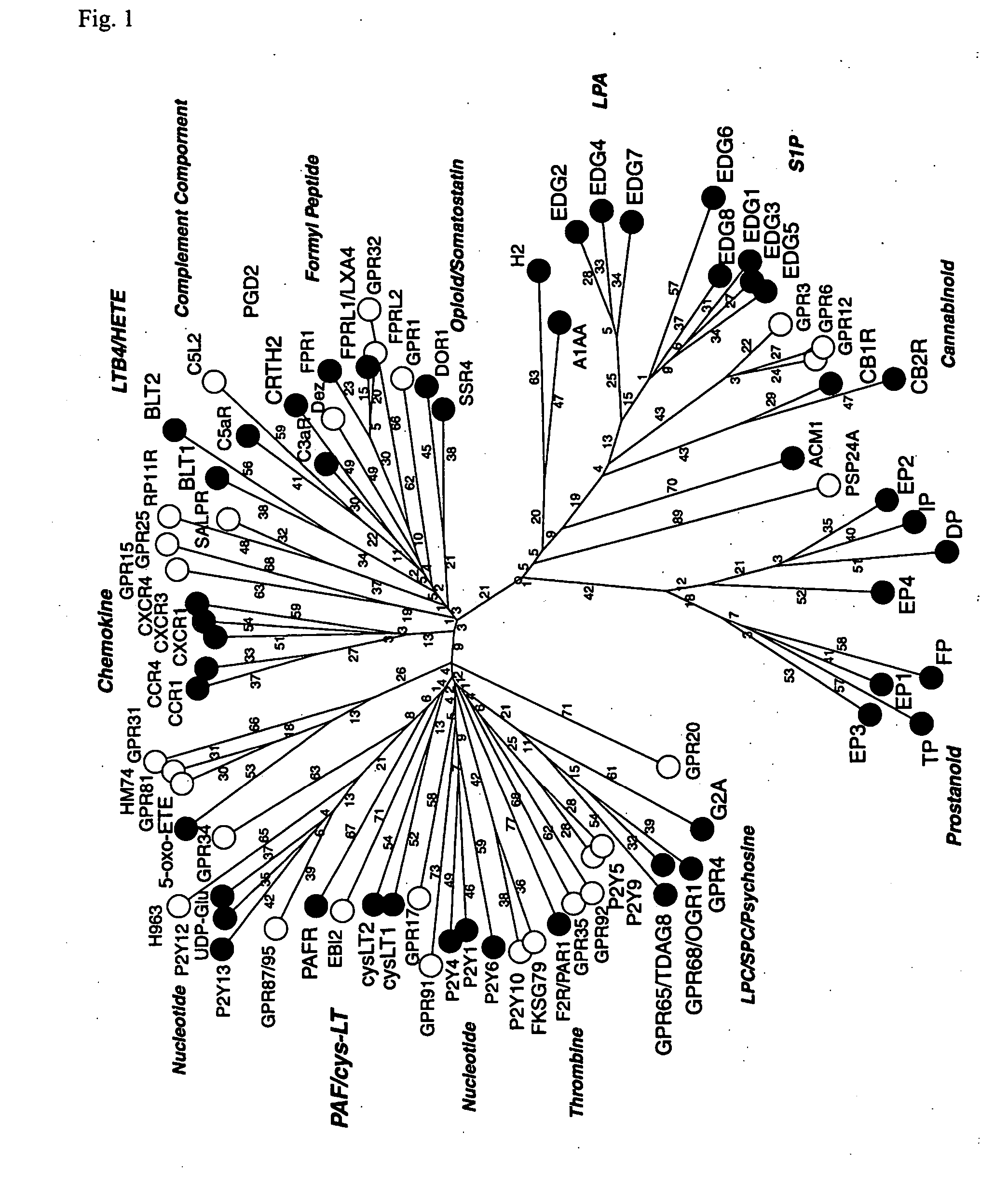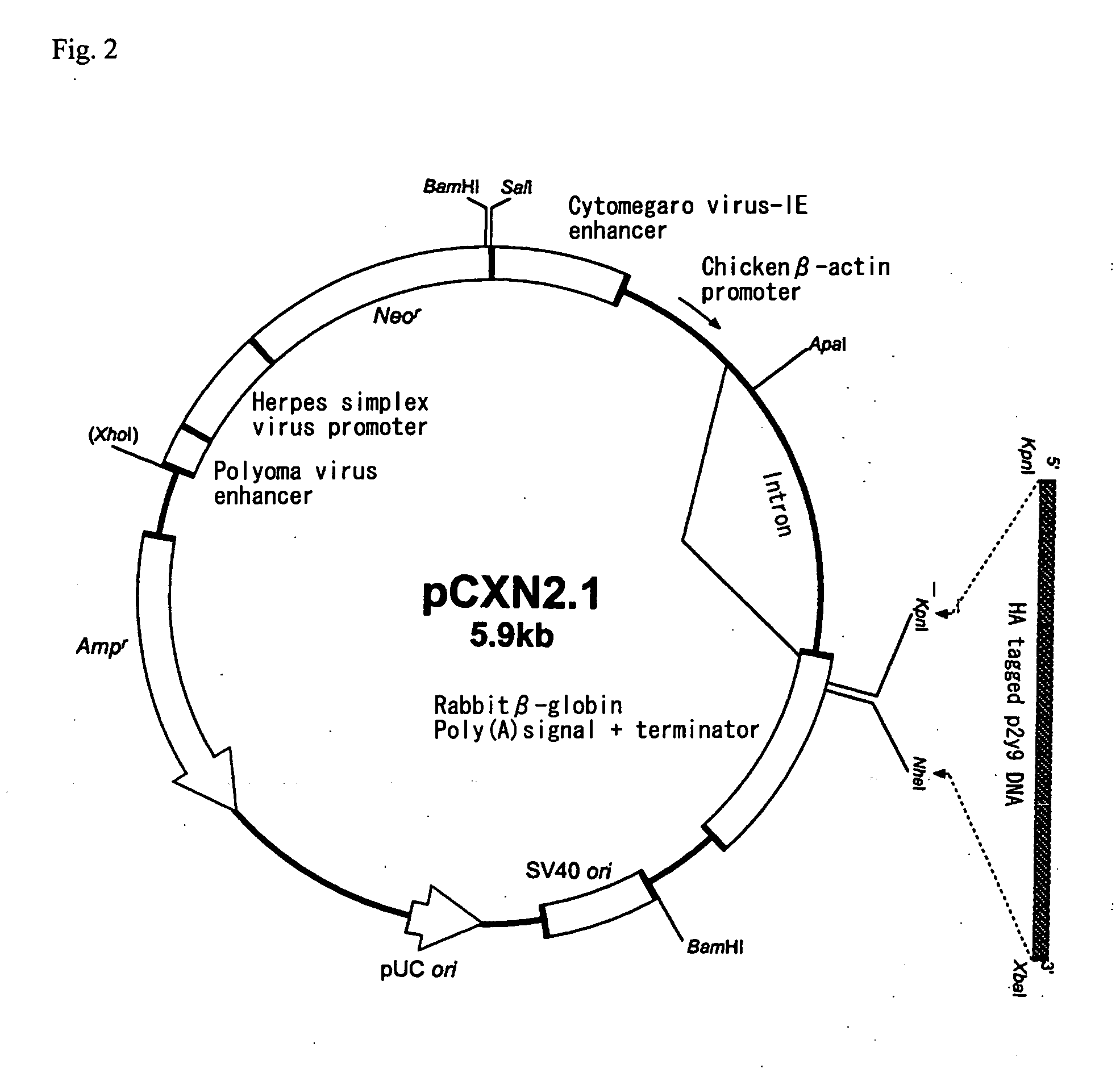Novel lysophosphatidic acid receptor
a lysophosphatidic acid and receptor technology, applied in the field of lysophosphatidic acid (lpa), can solve the problem that the receptor of lysophosphatidic acid has not yet been well characterized
- Summary
- Abstract
- Description
- Claims
- Application Information
AI Technical Summary
Problems solved by technology
Method used
Image
Examples
example 1
Introducing Receptors to CHO Cells
[0120] DNAs encoding four types of orphan receptors such as GPR34, p2y5, p2y9 and p2y10 tagged with HA comprising 9 amino acids residue at N terminus were respectively introduced into pCXN2.1 vectors (see FIG. 2) and consecutively transfected into CHO cells using Lipofectamine PLUS reagent (Invitrogen). Cells were incubated in Ham's F-12 supplemented with 10% fetal bovine serum. After proliferation of clones derived from a single cell from the CHO cell line in the presence of 2 g / L neomycin, plurality of clones stably expressing HA-tags on the cell surface were selected by flow cytometric analysis and thereby obtained clones stably expressing individual receptors.
example 2
Determination of Lipid Induced Calcium Concentration Changes in Individual Clones
[0121] CHO clones of four individual receptors such as GPR34, p2y5, p2y9 and p2y10 were seeded respectively in three 96-well plates at a density of 4×104 cells / well. On the following day, cells were loaded with 4 μM of Fluo-3 (calcium indicator) and incubated at 37° C. for 1 hour for incorporation of Fluo-3. Cells were then reacted with individual lipids (1 to 10 μM) contained in the Lipid Library of BIOMOL comprising over 200 kinds of lipid molecules and 17 nucleotides (1 to 100 μM) such as ATP, then time course kinetics of intracellular calcium mobilization was monitored with FLEXstation of Molecular Devices.
[0122] CHO cells endogenously expressing ATP receptors, the remarkable change in intracellular calcium concentration beyond the measurable range has been detected in ATP added clones. This enabled to confirm the relevance of the experiment.
[0123] On the other hand, unlikely to the case of ATP, ...
example 3
[0124] Determination of LPA-Dependent Calcium Concentration Changes in Individual Clones
[0125] CHO clones stably expressing four types of receptors such as GPR34, p2y5, p2y9 and p2y10 respectively were used to monitor the intracellular calcium concentration change in each cell in the same manner as described in Example 2.
[0126] The result was shown in FIG. 3.
PUM
 Login to View More
Login to View More Abstract
Description
Claims
Application Information
 Login to View More
Login to View More - R&D
- Intellectual Property
- Life Sciences
- Materials
- Tech Scout
- Unparalleled Data Quality
- Higher Quality Content
- 60% Fewer Hallucinations
Browse by: Latest US Patents, China's latest patents, Technical Efficacy Thesaurus, Application Domain, Technology Topic, Popular Technical Reports.
© 2025 PatSnap. All rights reserved.Legal|Privacy policy|Modern Slavery Act Transparency Statement|Sitemap|About US| Contact US: help@patsnap.com



